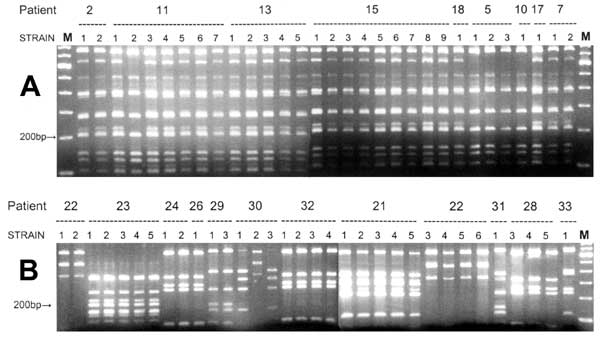Volume 7, Number 5—October 2001
Research
Rapid Emergence of Ciprofloxacin-Resistant Enterobacteriaceae Containing Multiple Gentamicin Resistance-Associated Integrons, the Netherlands
Figure 3

Figure 3. . Amplification fragment length polymorphism analysis analysis of the Enterobacter cloacae and Escherichia coli integron amplicons. A. AluI restriction fragment length polymorphism (RFLP) patterns for the integrons amplified from the E. cloacae strains. Patients and strains are identified above the lanes. Lanes marked M contain molecular length markers; the 200-bp fragment is identified on the left. Two different patterns are identified: only strains 11-2, 5-1, 5-2, 5-3, and 10-1 show a slightly different mixture of restriction fragments (2 are missing). B. AluI RFLP patterns for the integrons amplified from the E. coli strains. Patients and strains are identified above the lanes; lanes marked M contain molecular length markers, with the 200-bp fragment is identified on the left. Note the clear difference in complexity in comparison with the homogeneous patterns shown in A.